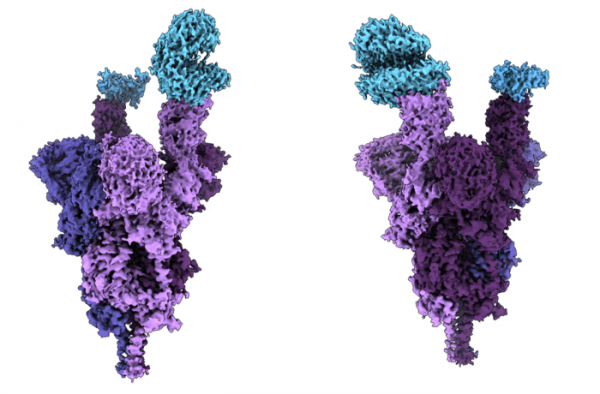Findings show strong antibody evasion and binding with human cells that contribute to increased transmissibility—and that vaccination remains the best defence.
UBC researchers are the first in the world to conduct a molecular-level structural analysis of the Omicron variant spike protein.
The analysis—done at near atomic resolution using a cryo-electron microscope—reveals how the heavily mutated variant infects human cells and is highly evasive of immunity. The findings shed new light on why Omicron is highly transmissible and will help accelerate the development of more effective treatments.
Dr. Sriram Subramaniam (he/him), professor in UBC faculty of medicine’s department of biochemistry and molecular biology, discusses the implications of his team’s research, which is currently under peer review and available as a preprint at bioRxiv.
Read more at University of British Columbia
Image: Atomic structure of the Omicron variant spike protein (purple) bound with the human ACE2 receptor (blue). (Credit: UBC Faculty of Medicine)


